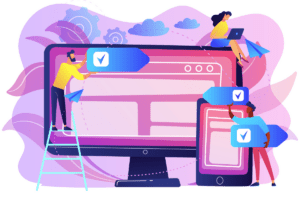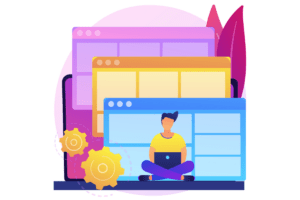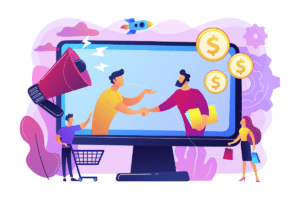Bringing traffic to your website is important. But, if that traffic doesn’t turn into leads, what’s the point? This is where on-page SEO becomes more than just a checklist. It’s not just about getting seen in search engines. It’s about building pages that speak to the right people, earn their trust, and move them toward conversion. In this article, we are going to talk about the best ways to improve your on-page SEO for lead generation. First, let’s go through what on-page SEO even is.
What is On-Page SEO?
On-page SEO refers to the elements on your website that you can control and optimize. Things like headlines, meta descriptions, page content, internal links, and calls to action. While all of these elements help your content rank on Google and other search engines, they also do something just as important. That is shaping your visitor’s experience from click to conversion. When your on-page SEO is tuned toward conversion, you don’t just bring people in. You keep them there, educate them, and guide them toward becoming a lead. Think of it as building the bridge between visibility and action.

13 Ways to Improve On-Page SEO for Lead Generation
Now that you know what on-page SEO is, let’s go over how to improve your on-page SEO for lead generation.
1. Start With Keyword Intent
Getting traffic from the wrong search terms is one of the fastest ways to waste effort. Instead of targeting broad or informational queries, build pages around keywords with clear purchase or decision-making intent. For example, instead of ranking for “CRM software,” which attracts early researchers, aim for terms like “best CRM for B2B sales teams” or “CRM demo request.” These show the searcher is closer to taking action. The closer you are to solving the visitor’s problem, the more likely they are to convert on your landing page or read more of your blogs.
2. Optimize Your Page Titles
It’s tempting to build pages around keywords and call it a day. But, a keyword match isn’t enough. If you want to generate leads, the page must solve the visitor’s problem and offer a next step. Try to create content that speaks directly to pain points and how you fix them. Social proof like customer stories, reviews, and stats can further drive home your point. And most importantly, make sure there’s a clear, relevant CTA that reflects the visitor’s stage in the journey. For a high-intent keyword, this might be a demo request. For a mid-funnel keyword, it could be a downloadable guide.
3. Use Headers to Keep Visitors Reading
Most of the time, when a visitor lands on your website, they skim. Headers, whether they are H1, H2, H3, etc, are your chance to hook them and keep their attention. Use headers to build your story, aligning them with search intent and building towards your call to action. Keep in mind, your landing page only needs one H1 heading, and a variety of other headings. Here are a few examples that a CRM company could have on a service page:
- H1: “How Our B2B CRM Helps You Close More Deals”
- H2: “Built for Sales Teams Who Need Results”
- H3: “Easy Onboarding, Measurable ROI”
- H2: “Book Your Personalized Demo”
Each section leads the reader forward. Each step builds toward conversion.
4. Build Trust with Lead-Focused Content
Search engines may love well-structured content, but humans convert when they trust you. If your content is too generic, too salesy, or too stuffed with keywords, people will bounce. And, your leads will disappear. To generate leads, write content that reflects your ICP’s challenges, including real-life examples. This will show how your solution fits into their every day life in a relatable way. When readers feel like your business understands them, they’re far more likely to take the next step, whether that’s filling out a form, downloading a resource, or booking a call.
5. Strategic CTA Placements
Even if your CTA is great, if it is in an awkward spot, it might not get a lot of conversions. Instead of tucking your form at the bottom of the page, look for natural breaks where someone might be convinced and ready to act. This could be after you explain the core benefits of your product, once you’ve shown proof of ROI, or at the end of an educational article. Use CTA language that matches intent. Instead of “Submit,” say “Get My Free Quote” or “Download the Guide.” Make it feel like a natural step forward, not a request.
6. Optimize for Mobile
As a B2B company, you may be surprised to know how many people are visiting your website on their phone. Because of this, if your forms are hard to use or your buttons are tiny, you’re missing out on opportunities. Every lead generation element, whether it’s a button, chatbot, or form, should be fast and easy to use on any device. Test out your entire website on your phone, if you can’t easily convert from your phone, your leads can’t either.
7. Use Internal Links to Drive to High-Converting Pages
Internal links are great for both SEO and driving visitors throughout your website. If someone is reading a blog post, don’t let it be a dead end. Link to relevant service pages, case studies, or eBooks. If you know that your product page has a high conversion rate, make sure multiple blog posts point back to it. For example, if you have a free tool or template, link to it from FAQ pages or educational content. This will help guide your visitors from curiosity to action.
8. Add Exit-Intent Offers
If a visitor is about to leave your page, you still have a shot at turning them into a lead. Exit-intent popups offer one last chance to engage, whether it’s a free ebook, a discount, or a quick consultation. Just make sure it aligns with the content they were reading. Someone leaving a pricing page might respond to a “Talk to Sales” popup. While someone leaving a blog post may be more open to a downloadable guide.
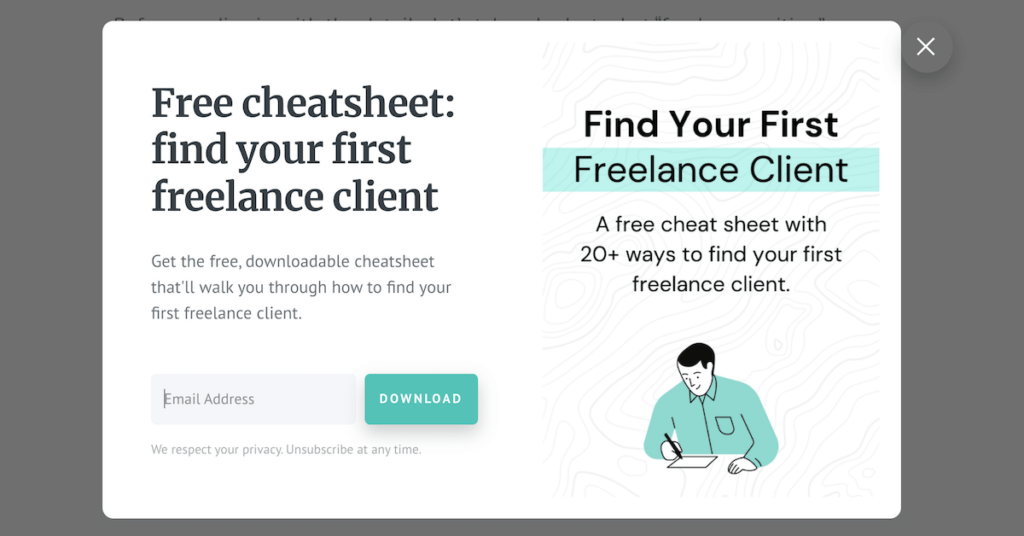
9. Implement Schema Markup
Schema markup helps your content stand out in search results by displaying rich features like FAQs, star ratings, or product info. And when your search snippet stands out, more people click.A searcher who clicks through a well-marked FAQ listing has already engaged with your content before even landing on your site. If you can get more engaged searchers to your landing pages, you’re that much closer to generating a lead.
10. Include Social Proof
People are far more likely to convert if they see that others have already benefited from your solution. That’s where on-page social proof comes in. Add customer logos, brief testimonials, case study snippets, or review scores directly onto your high-traffic pages. This builds instant trust and reduces hesitation. Think about where a prospect might start having doubts and place the proof right there to keep them moving forward. It can also be a good idea to scope out your competitor’s negative reviews, and ensure you have social proof that showcases why that is not an issue at your company.

11. Refresh and Update Older Content
Google favors content that’s relevant and up to date. That means your existing blog posts and pages shouldn’t be left to collect dust. Go back and check your articles for outdated stats, broken links, or changes in industry trends. If something no longer aligns with best practices, give it a refresh. This will show both Google and your visitors that your content is relevant and high quality.
12. Analyze, Analyze, Analyze
Once you’ve optimized your on-page SEO with lead generation in mind, the job’s not over. You need to know what’s working and what isn’t. Software like Google Analytics and Hotjar can help you understand which pages bring in the most traffic versus leads, where people are dropping off, and which CTAs get clicked most often. From there, you can test variations. Try new headlines, adjust your CTA placement, or simplify your forms. On-page SEO should evolve based on what your audience actually responds to.
13. Identify Your Website Visitors
It can be discouraging to know that 98% of website visitors do not convert on a landing page. However, with the help of Visitor Queue, you can identify your anonymous website visitors even if they don’t convert on a call to action. Find out how each company lands on your site, what pages they visited, and how long they spent on each page. We also provide employee contact information to help you reach out and ensure they found what they were looking for. Start your 14-day free trial of Visitor Queue today to stop losing leads.
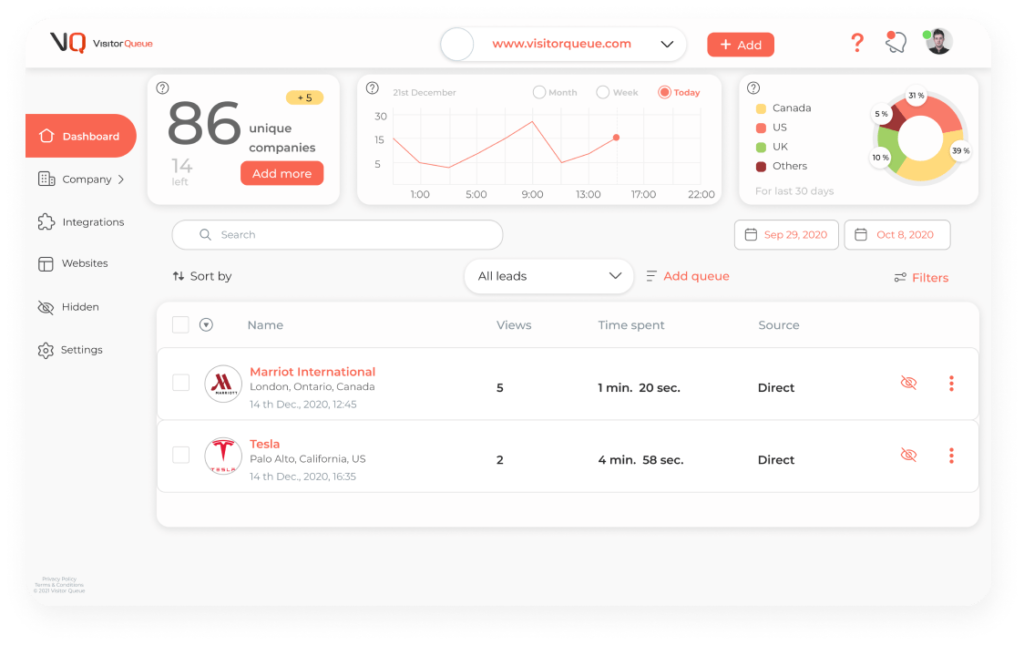
Wrap Up
A high-ranking page is worthless if it doesn’t bring in leads. On-page SEO is more than just ranking, it’s also about creating a connection and then conversion. Every headline, section, keyword, and link should work together to attract the right person and convince them to take the next step. If you’re not sure where to start, pick one high-traffic page and begin applying these strategies. Look at your CTAs. Check your headings. Add internal links. Track your conversions. As always, if you have any questions about Visitor Queue, do not hesitate to reach out.
 Identify
Identify Personalize
Personalize Benchmark
Benchmark Agencies
Agencies Integrations
Integrations Case Studies
Case Studies Use Cases
Use Cases Blog
Blog Resources
Resources

